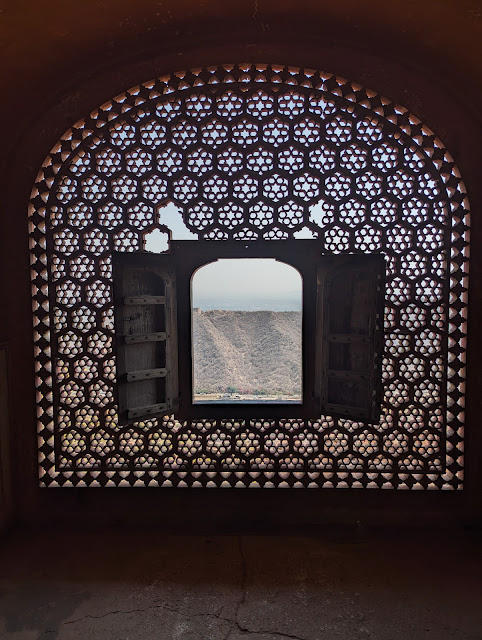स चा ह
हा लेख लिहून कमीत कमी पाच-सहा वर्षे तरी झाली असतील, कदाचित जास्तच. Covid च्या आधी लिहिला होता हे नक्की. पण post करण्याचं धाडस होत नव्हतं 🙂
आता करतो आहे, आणि का, ते लेखाच्या शेवटी लिहितो.
———————
महाराष्ट्राच्या इतिहासाला एक मोठं वळण केवळ ‘ध’ चा ‘मा’ झाल्यामुळे लागलं असं म्हणतात. असेलही. पण माझ्या मते ‘स’ चा ‘ह’ झाल्याचा परिणाम खूप जास्त विचार करायला लावणारा आहे.
जेंव्हा शब्द एका भाषेतून दुसऱ्या भाषेत जातात तेंव्हा त्यांचे उच्चार बदलणे स्वाभाविक आहे. ‘प’ / ‘फ’ / ‘ब’ एकमेकांत बदलतात तसंच ‘स’ आणि ‘ह’ सुद्धा. वर्णावलीत जसे ‘प’ / ‘फ’ / ‘ब’ एकत्र मांडले जातात, तसे ‘स’ आणि ‘ह’ सुद्धा आणि ते ह्याच कारणामुळे.
वैदिक संस्कृत आणि प्राचीन फारसी ह्यांचा जन्म एकाच भाषेतून झाला होता ही कल्पना नवीन नाही. आणि गेल्या काही दशकांमध्ये झालेल्या संशोधनामुळे भाषाशास्त्रज्ञाचं आता ह्या बाबतीत एकमत आहे. त्यामुळे ह्या दोन्ही भाषेंतील काही शब्दांचा उगम एकच असणे स्वाभाविक आहे. त्यात काही शब्दांचा प्रवास खूपच रंजक आहे.
प्राचीन काळी, जो शब्द वेदकालीन संस्कृत मध्ये “मास” असा आला, तोच शब्द जेंव्हा प्राचीन फारसी मध्ये गेला तेंव्हा, ‘स’ चा ‘ह’ झाला आणि त्याचे रूपांतर ‘माह’ मध्ये झाले. दोन्ही अर्थ तेच राहिले - “moon” आणि “month”. चंद्राच्या कलांनुसार दिवस मोजणी होत असल्यामुळे एकच शब्द moon आणि month साठी असणं स्वाभाविक आहे. त्यावरून चंद्र ह्या अर्थाशी निगडित असलेले फारसी शब्द, माहताब, माहरू वगैरे, उर्दू कवितां मधून सतत आपल्यासमोर येत असतात. उर्दू कवींच्या अशा काही लाडक्या शब्दांचा उगम फारसी आणि संस्कृत ह्यांच्या मूळ भाषेत आहे. फारसी मध्ये ‘माह’ वरून शब्द बनला “महिन:” (مہنہ). तो आपण मराठीत घेतला ‘हि’ दीर्घ करून ‘महीना’ असा.
आपण ‘मास ‘ आणि ‘महीना’ असे दोन्ही शब्द वापरतो. दोन शब्द, उगम एकच आणि अर्थही तोच. पण प्रवास वेगळा असल्यामुळे थोडे भिन्न वाटतात.
तीच गोष्ट अजून एका शब्दाची. जो शब्द वेदकालीन संस्कृत मध्ये "सप्त" (seven) असा आला, तोच शब्द जेंव्हा प्राचीन फारसी मध्ये गेला तेंव्हा 'स' चा 'ह' झाला, आणि 'प' चा झाला 'फ' आणि शब्द झाला 'हफ्त:' (ہفتہ). हिंदी मध्ये "week" अर्थाने असणारे दोन्ही शब्द 'सप्ताह' आणि 'हफ्ता' ह्यांचा उगम एकाच प्राचीन शब्दातून. एक आला सरळ संस्कृतमधून, तर दुसरा फारसी मार्गे. मराठीतही दोन्ही शब्द आले. जरी 'सप्ताह' चा अर्थ तसाच राहिला तरी 'हप्ता' चा अर्थ झाला 'installment'. मुंबईतल्या बोलीभाषेत 'हप्ता' चा अर्थ अजूनच वेगळा आहे, हे तर सर्वांना माहित आहे.
आधी म्हटल्या प्रमाणे, शब्दांचा प्रवास खरोखरच खूप रंजक असतो.
पण ह्यात विचार करायला लावण्यासारखं काय आहे?
ह्याच 'स' चा 'ह' होण्याच्या प्रक्रियेमुळे 'सिंधु' नदीचं आणि त्या पलीकडल्या प्रांताचे नाव प्राचीन फारसी मध्ये झाले 'हिंदू'. त्या प्रांतात राहणाऱ्या लोकांनाही तेच संबोधन प्राचीन फारसी मध्ये रूढ झालं. ऋग्वेदामध्ये ज्या प्रांताचा उल्लेख 'सप्त सिंधू' असा आहे, त्याला अवेस्तां ह्या पारसी धर्मग्रंथा मध्ये 'हप्तहिंदू' असे म्हटले आहे. (अवेस्तां हे भाषेचही नाव आहे, जी जुन्या फारसी भाषेशी निगडित आहे.) ऋग्वेद आणि अवेस्तां ह्यातलं साधर्म्य आणि फरक हा एक मोठा आणि अतिशय रोमांचक विषय आहे, त्यावर अजून अभ्यास करायची माझी खूप इच्छा आहे.
इथे काही गोष्टींवर लक्ष देणं आवश्यक आहे. फारसी मध्ये हिंद आणि नंतर अरबी मध्ये (अल हिंद - الهند) हा शब्द भौगोलिक अर्थाने आहे, धार्मिक नाही. त्यावरून इंग्लिश मध्ये गेलेला शब्द India हा ही भौगोलिकच आहे. हिंदुस्तान हा शब्द पहिल्यांदा प्राचीन फारसी मध्ये वापरला गेला होता. हे नाव ज्या मूळ सिंध प्रांतामुळे पडलं, तोच आता आजच्या हिंदुस्तानात नाही, पाकिस्तान मध्ये आहे. आणि भारतात मात्र सिंधी भाषिक राज्य नाही. पण एका जुन्या संदर्भाने आपण सर्व ‘सिंधी’ आहोत असं मला म्हणावंसं वाटतं.
त्याही पेक्षा उपरोधात्मक आणि विचार करायला लावणाऱ्या गोष्टी आहेत. भारतीय भाषांमध्ये "हिंदू" ह्या शब्दाचा अर्थ केवळ धार्मिक राहिला आहे. आपण हिंदू जे आपल्या धर्माचे नाव म्हणून वापरतो ते इराण मधल्या मुसलमानांच्या पूर्वजांनी (मुसलमानांनी नाही) ह्या भौगोलिक प्रदेशाचे ठेवलेले नाव आहे. हिंद प्रांतातले लोक जी भाषा बोलतात त्याला फारसी भाषिकांनी नाव दिलं हिंदी. भाषेतून “परके” शब्द काढून टाकायचा आग्रह जे करतात, त्यातल्या किती लोकांना ही माहिती आहे की ह्या भाषेचे नावच “परक्या” लोकांनी ठेवले आहे? सद्य परिस्थितीत ही सर्व चर्चा दुर्दैवाने भावनिक आणि अतिशय प्रक्षोभक होऊ शकते.
सांगायचा मुद्दा असा की, 'स' चा 'ह' होण्याचा परिणाम 'ध' चा 'मा' होण्यापेक्षा खूप गहन आहे.
असो. वातावरण थोडं हलकं करण्यासाठी शेवटी गंमत म्हणून अजून एक वेगळीच व्युत्पत्ती, ह्याच सिंधचा हिन्द होण्यामुळे झालेली.
अरबी लोकांबरोबर भारताचे व्यापारी संबंध खूप जुने आहेत. जेंव्हा अरबी लोकांनी चिंच बघितली, तेंव्हा ती त्यांना थोडी खजूर सद्दृश्य वाटली असावी - काळा चिकट गर, आत एक टणक बी. हा केवळ माझा कयास. कारण काही असो, त्यांनी चिंचेला नाव दिलं "हिंदचा खजूर". खजूराला अरबी मध्ये एक शब्द आहे - तमर. म्हणून अरबी मध्ये चिंच म्हणजे "तमर-ए-हिंदी" (تمر هندي ). त्याचे इंग्लिशमध्ये रूपांतर झालं "Tamarind". आता “date tamarind chutney” ज्यावेळी खाल, तेंव्हा हे लक्षात ठेवा की ती दोन प्रकारच्या खजुरांपासून बनली आहे. एक अरबस्तानातला खजूर आणि दुसरा हिंदुस्थानातला. 🙂
———————
आज हे सर्व लिहिण्याचं धाडस केलं, कारण हिंदू शब्दाची व्युत्पत्ती आता खूप लोकांना माहित आहे. आणि म्हणूनच “सनातन धर्म” हे नाव वापरण्याची प्रथा वाढत चालली आहे. त्यामुळे उलट्या सुलट्या आरोपांचा भडीमार माझ्यावर होण्याची शक्यता आता कमी. म्हणजे निदान अशी आशा तरी करू शकतो 🙂 आणि तरी सुद्धा काही शंका किंवा आक्षेप असेल तर अजून एक माहिती. वीर सावरकर, ज्यांनी हिंदुत्व ह्या शब्दाची निर्मिती केली त्यांनीसुद्धा अगदी हीच व्युत्पत्ती स्पष्टपणे समजावून सांगितली आहे. (बघा https://hwatchmediabucket.s3.amazonaws.com/wp-content/uploads/2019/11/12143419/Essentials-of-Hindutva-by-Vinayak-Savarkar.pdf)































